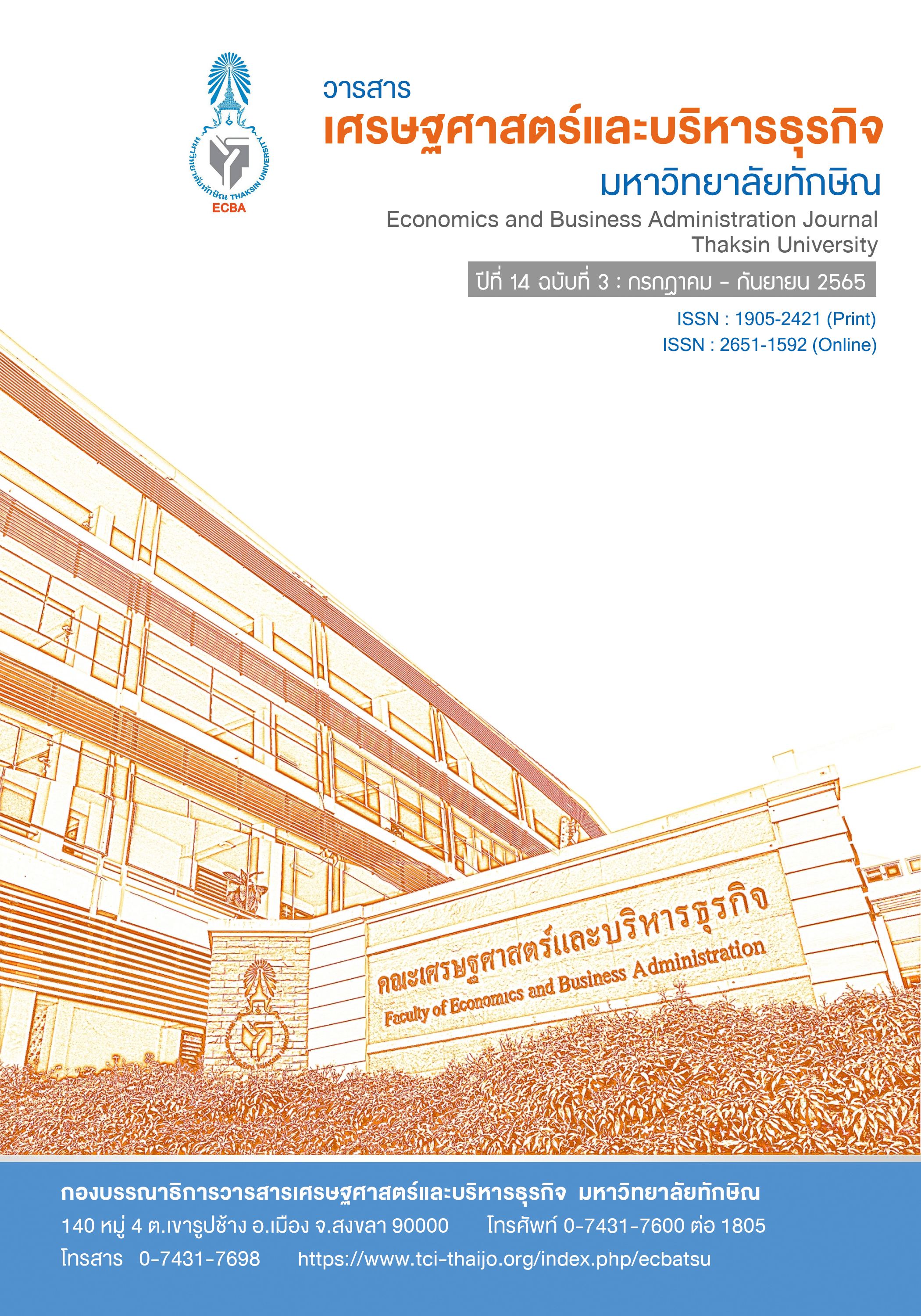Assessing the Damage of Personal Data Breach: A Case Study of Bangkok Metropolitan Area
Keywords:
Data Breach, Willingness to Pay, Contingent Valuation MethodAbstract
The objectives of this study are (1) assess the damage of personal data breach by using Contingent Valuation Method and Censored Regression Model to estimate willingness to pay for privacy and security of personal data. (2) investigate the determinants of willingness to pay for privacy and security of personal data of the 549 samples who live in Bangkok Metropolitan region. The result revealed that the willingness to pay for privacy and security of personal data is 2,390.66 baht per person per year. The economic value of damage of personal data breach from e-Commerce platforms occurred in November 2020 in Thailand estimated from this study was up to 31,078.56 million baht. The initial bid price, age, marital status, income, communication cost, knowledge and understanding of personal data, experience of personal data breach, the importance of personal data privacy, and risk perception of sharing personal data were correlated to the willingness to pay with a statistically significant.
References
Acquisti, A., John, L. K., & Loewenstein G. (2013). What Is Privacy Worth?. The Journal of Legal Studies, 42(2), 249-274.
Bangkok Herald. (2020). Lazada blames tech partner for hackers stealing 13 million Thailand data records. Retrieved from https://bangkokherald.com/business/tech/lazada-blames-tech-partner-for-hackers-stealing-13-million-thailand-data-records/
Beresford, A. R., Kübler, D., & Preibusch S. (2012). Unwillingness to pay for privacy: A Field Experiment. Economics Letters, 117(1), 25-27.
Blythe, J. M., Johnson, S. D., & Manning, M. (2020). What is security worth to consumers? Investigating willingness to pay for secure Internet of Things devices. Crime Science, 9(1), 1-9.
Cameron, T. A. (1988). A New Paradigm for Valuing Non-market Goods Using Referendum Data: Maximum Likelihood Estimation by Censored Logistic Regression. Journal of Environmental Economics and Management, 15(3), 355-379.
Carrière-Swallow, Y., & Haksar, V. (2019). The Economics of Data (IMF Publication No. 19/16). Retrieved from https://blogs.imf.org/2019/09/23/the-economics-of-data/
Hanemann, W. M. (1984). Welfare evaluations in contingent valuation experiments with discrete responses. American Journal of Agricultural Economics, 66(3), 332–341.
Lee, S. Y., Chung, J. H., & Lee, J. S. (2015). A study on the damage costs for private information leakage using the contingent valuation method. In Brebbia, C. A. (Ed.), Sustainable Development. (p. 1249-1258). United Kingdom: Wessex Institute of Technology.
Skatova, A., McDonald, R. L., Ma, S., & Maple, C. (in press). Unpacking Privacy: Willingness to pay to protect personal data. PsyArXiv.
Trachtenbarg, D. E., Asche, C., Ramsahai, S., Duling, J., & Ren, J. (2017). The benefits, risks and costs of privacy: patient preferences and willingness to pay. Current Medical Research and Opinion, 33(5), 845-851.
Wannitikul, K. (2002). Environmental Economics (2nd ed.). Nonthaburi: Sukhothai Thammathirat Open University
World Economic Forum. (2020). The Global Risks Report 2020. Retrieved from http://www3.weforum.org/docs/WEF_Global_Risk_Report_2020.pdf
You, S. D., & Yoo, J. (2014). Determinants of Willingness To Pay for Personal Information Protection. Journal of the Korea Institute of Information Security & Cryptology, 24(4), 695-703.
Downloads
Published
How to Cite
Issue
Section
License
Copyright (c) 2022 Economics and Business Administration Journal Thaksin University

This work is licensed under a Creative Commons Attribution-NonCommercial-NoDerivatives 4.0 International License.




